I love being in the mountains wherever I am so drove several famous mountain passes in South Africa. And from all the recommendations I received from locals and other travelers I’m obviously not the only one who likes driving in the mountains. Curvy mountain roads may not be to everyone’s liking but I find them a breathtaking challenge. The Western, Eastern and Northern Capes of South Africa have more than 490 mountain passes that also challenged engineers to build roads providing access for transportation and linking the countryside.
View from Die Top of Swartberg Pass
Pass builders
Most notable of the 19th century road engineers were Andrew Geddes Bain who immigrated from Scotland in 1816, and his son Thomas Charles John Bain from Graaff-Reinet. Although Andrew was not a trained engineer he built eight road passes in extremely rough terrain. Thomas assisted his father and later passed examinations in 1854 then went on to build 24 major mountain roads and passes. Today many of these engineering feats have been declared as National Monuments or National Heritage Roads.
Often times the routes over the mountains and through harsh environments originated as foot paths used by the local natives and later bridle paths by horseman. As roads often followed river beds wash outs regularly occurred. Labor was primarily provided by convicts and prisoners of war using little more than hand drills, sledge hammers, steel bars, picks and shovels. Instead of guardrails, walls of dry-stacked stone were placed at steep-edged drop-offs, a trademark of Thomas Bain.
Swartberg toll house
Toll houses were built along the passes and charged two pence per wheel and one penny for each pulling animal plus two pence for a horse, cow, ox or mule and one-half a penny for a sheep, goat or pig. I saw the remains of a couple Toll houses but the narrow roads over the kloofs and poorts weren’t always conducive to parking.
Definitions
Over a what you may be asking. Many geographic names come from Africaans, along with English, one of several languages spoken in South Africa. So here are some definitions you’ll need to understand this story.
Kloof means “a mountain pass or deep ravine” while poort adds “a steep narrow mountain pass usually following a river or stream.” These Africaans’ names often honor the builder, a notable figure or local character. Groot = great, stroom = stream, berg = mountain, drift/drif = or sharp corners, fynbos = fine, delicate bush, tarred & untarred = pavement of some sort or not as in sand road. N roads = National, usually paved, sometimes shoulders, main routes. R roads = Route “principale,”which I call Rural, sometimes paved, rarely shoulders.
In the order I drove some of the famous mountain passes in South Africa
Pretty much east to west
Numbered right to left & don’t know what the big circled 2 is
1. Grootrivier Pass, Nature’s Valley
My first mountain pass would have been missed if I followed directions better. I was never lost. Yet when turning off the N2 to Nature’s Valley on my way to Wild Spirit Backpackers Lodge I took the first exit instead of the second for the R102 loop. Starting on top of the coastal plateau at 722 feet (220 m), down to the sea plus an unnecessary loop around the one business in “town” I finally followed new directions to “the top of the pass.” A short and sweet drive with no photos due to keeping both hands on the wheel and eyes on the left side of the road.
The Grootrivier is one of several Tsitsikamma Mountain streams that over millions of years cut through the coastal plateau towards the sea. The pass was finished in 1880 by Thomas Bain and major reconstruction occurred in 2010.
2. Outeniqua Pass
After meeting fellow blogger Jo in Knysna and following the coastal Garden Route I veered inland at George and drove north on the N12 over this 2600 foot (800 m) summit climbing a twisty route 2185 feet (666m) over the Outeniqua Mountains into the Little Karoo like I’d done during the 2010 journey when I went caving.
Thank goodness I didn’t have to drive the original road completed in 1845 in one year by surveyor Henry Fancourt White. Or the 1943 upgrade which required eight years to complete 9 miles (14.5 km) through hard rock using the labor of Italian prisoners of war. Instead I enjoyed the natural scenery recreated during the 1993 upgrade when engineers and environmentalists co-operated to protect the nature reserve through which the pass runs. The four-year project included removing 1000s of plants to a nursery, stockpiling topsoil for later use, plus seeds and cuttings were collected to accomplish the largest and most successful fynbos revegetation project of its time.
3. Robinson Pass
I drove Robinson Pass during my last visit returning to the Garden Route from Oudtshoorn where I rode an ostrich. Jonker who lives in nearby Port Elizabeth had recommended this gorgeous mountain route. But this time I took an entirely different path.
Also built by Thomas Baine and named after the Chief Inspector of Public Works Murrell Robinson, this 11 mile (17 km) road with a 1128 foot (344 m) gain in elevation was completed in 1869. The route connected Oudtshoorn’s inland ostrich farms to coastal Mossel Bay where feathers were exported around the world to adorn ladies hats. The road was rebuilt, re-routed and finally paved between 1958 and 1963 making it an easy pass to travel.
4. Schoemanspoort
Having already driven the R328 as it climbs 718 feet (219 m) from Oudtshoorn to the 1981 foot (604 m) summit at Cango Cave I was looking forward to doing it again although this time I wasn’t headed to the cave.
The 12 mile (19 km) Schoemanspoort road was, of course, built by Thomas Bain in 1862. Winding its way alongside the Grobelaars River past immaculate farms that also cater to the tourists with food, fun, wine tasting and accommodations. I was headed to De Oude Meul (The Old Mill) Lodge for an overnight before heading west onto the famous wine Route 62 at the suggestion of Jo.
5. Swartberg Pass
Then at the recommendation of Boy Spies, 3rd generation owner/manager of The Old Mill, I changed my plans and not only drove to “Dei Top” of Swartberg Pass but down the other side and continued with yet another pass to loop back to Oudtshoorn. In total I covered 99 miles (160 km) in five hours and could have lollygagged even longer.
Prince Albert Valley
This 17 mile (27 km) road is considered one of the finest mountain passes in the world with its steep zigzags and sudden switchbacks to 5193 feet (1583 m) above sea level offering panoramic views into valleys and up to the towering peaks. It took Thomas Bain eight years directing 240 prisoners from the surrounding area to complete this, his final pass, then 100 years later in 1988 it was declared a National Monument.
Eastern view into gorge
This untarred road is “not recommended for heavy vehicles or caravans” (RVs) as posted. However the rental VW Polo handled it like a dream. There are countless hairpin rock-walled curves where people, including myself, stop anywhere to enjoy the views. Like seeing the Klein Karoo from Dei Top as in the first post photo, looking down into a gorge, the road just disappears. Several side roads beckoned to more passes that I will return for.
I was in awe of the tilted and folded sediments of high silicate shale exposed at every turn, the rock as twisty as the road.
Eventually the road drops through the gorge and follows a little stream then levels out on the R407 to Klaarstroom.
Swartberg mountains to Meiringspoort
6. Meiringspoort
Back on the N12 I came to Meiringspoort on the way to De Rust to complete the loop to Oudtshoorn. This 15 mile (25 km) drive only changed 393 feet (120 m) in elevation. Mostly following along a gorge, the road crosses the Groot River 25 times over bridges built from 1948-53 that replaced the fords each called by a unique drift name relating to a memorial incident. There is Watvaldrif named after the nearby waterfall and Spookdrif described as a supernatural light in the form of a ball of fire that was seen there. I didn’t see that.
“In every drift there is a bend and around every bend there is a drift.” –CJ Langehoven
(historic photo)
The original route known as the Boer Road, completed in 1858, was built for the transport of wool from the Great Karoo to the Mossel Bay Harbor. But due to massive flooding was upgraded by Thomas Bain in 1886.
I found a scenic place to stop at the Great Waterfall which towers 197 feet (60 m) above the pool, once thought bottomless but established at 30 feet (9 m) by divers in 1987. An easy walk up shallow steps carved into the rock face in 1925 for a visit by the Prince of Wales ends at the upper pool but the water was too chilly for me who prefers soaking in warm water where I headed later that day after yet another mountain pass.
7. Huisrivier Pass
From Oudtshoorn I left the N12 heading west into the famous wine country on R62 late enough to be staring into the lowering sun. Just beyond Calitzorp another pass took me over the 2181 foot (665 m) summit of the Klein Swartberge.
Originally built between 1896 and 1897—not by a Bain—the current pass is a new one having only been completed in 1966. Still an engineering marvel that required huge chunks of the mountain face carved out of the earth leaving sheer and steep gradients which posed problems of how to prevent further rockfalls onto the road. So retaining walls were built at some sections with a gap between the wall and the mountainside to catch rock falls. Other sections have restricting metal mesh placed over them. Understandable, but kind of ruins the esthetics and challenge some.
This pass lead me towards a threatening looking storm that only gave a few drops, not an uncommon pattern for the Little Karoo. After unpacking at the Warmwaterberg Spa a rainbow showed but I somehow deleted the photos.
8. Cogman’s Kloof
After three glorious days soaking at Warmwaterberg and a quick stop at Ronnies Sex Shop I headed for the hills. When Ronnie heard how much I liked Swartberg he strongly suggested Bain’s Kloof. Yet I had several more passes before it.
Cogman’s Kloof, built by Thomas Bain and completed in 1873, connects a short 4 mile (6.5 km) route between Ashton and Montagu. Along the route is the Cogman’s Tunnel which is more like a hole through the mountain supporting the remains of an old fort built in 1899 by the English, during the Anglo Boer War. The tunnel is also regarded as the window to the Little Karoo.
9. Du Toitskloof
Having continued west on N15 I spent a night in Worcester at Jasmyn House so I could drive over this 2733 foot (833 m) pass and turn around for the recommended Bain’s Kloof. The old R101 zig-zags around the newer N1 adding 7 miles (11 km) with no shoulders and slow trucks making passing, and photographs, difficult.
Hard to believe that this was the work of 500 Italian prisoners during World War II under the direction of the National Roads Council after Andrew Bain thought it too expensive.
10. Bain’s Kloof
I flipped a 180 in Wellington and drove back over these magnificent mountains on the R301 for 17 miles (27 km) of bliss with barely any traffic and plenty of pullouts to enjoy the views. Thanks for the excellent recommendation Ronnie.
As soon as Andrew Bain completed the next pass I drove he began Bain’s Kloof which provided a more direct route from the town of Wellington to the more northern towns of Ceres and Worcester with a 1463 foot (446 m) gain in elevation over the 1922 foot (586 m) summit. Completed in 1853 after five years of blasting through solid rock for 6 miles (10 km) and in some places building retaining walls 65 feet (20 m) high this was Andrew’s largest accomplishment and was listed as a National Monument in 1980.
11. Mitchell’s Pass
Mitchell’s Pass followed Bain’s Kloof and flowed quickly only climbing 620 feet (190 m) with some most amazing rock formations but only a few places wide enough to park. An even quicker descent lead me to Ceres where I stopped for the night at Rhodene Farm and just looked at all these mountains.
This pass, completed in 1849, is where Thomas Bain started his life as a road builder under apprenticeship of his father Andrew. The old Toll House was the pay point for travelers to the diamond fields. Now it’s a maintained National Monument with a small restaurant offering local traditional foods and treats.
Ceres Valley is surrounded by mountains and only accessible via three passes. I stayed on a working fruit farm at Rodene Farm Cottage and watched the colors change the ridges around me as the sun set.
Ceres Valley
12. Gydo Pass
At the recommendation of my host I drove the short 4 miles (6.5 km) just north of Ceres up 1269 feet (387 m) to Gydo Pass which offered expansive views of the valley and surrounding mountains.
This pass was built in 1848 under the supervision of Andrew Bain at the same time he worked on Mitchell’s Pass.
I then drove back down and headed over Mitchell’s Pass again continuing my journey west to the Atlantic Ocean.
Wasn’t like I started out seeking mountain passes but once I got into the mountains I directed my route more intentionally to enjoy the passes and views. I still haven’t driven all the famous mountain passes in South Africa or even all of the Bain’s passes, will work on that next visit. A big Thank You goes out to locals and other travelers for making suggestions that enhanced my journey over some of the famous mountain passes in South Africa. I would highly recommend visitors to explore these challenging roads and magnificent views.
The only link I was compensated for was Wild Spirit, all the others are just because I like them.

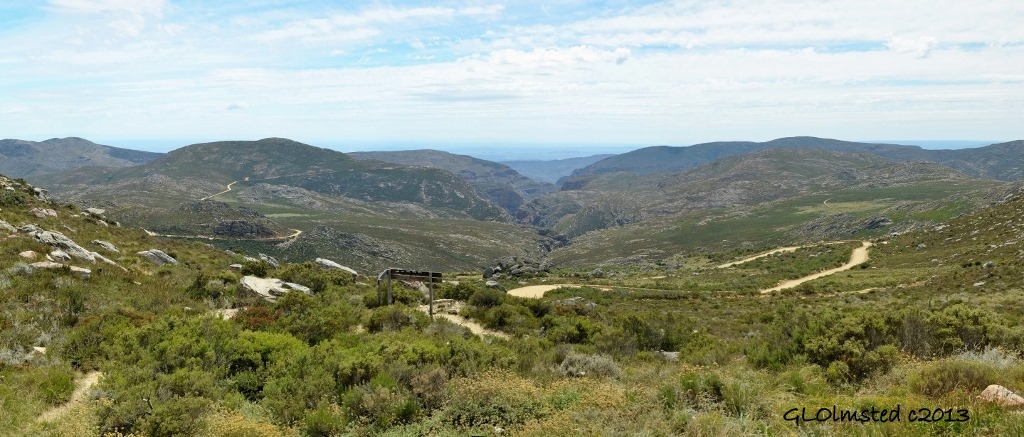
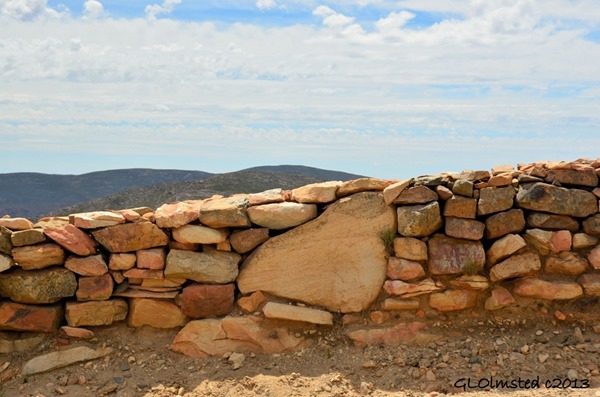
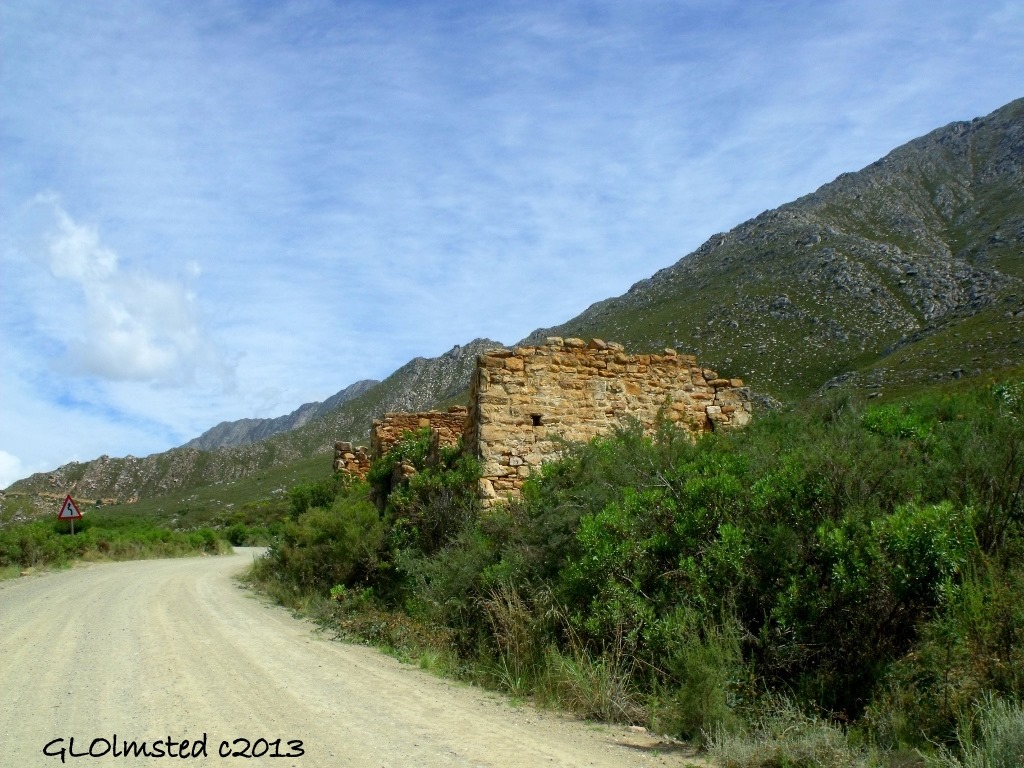
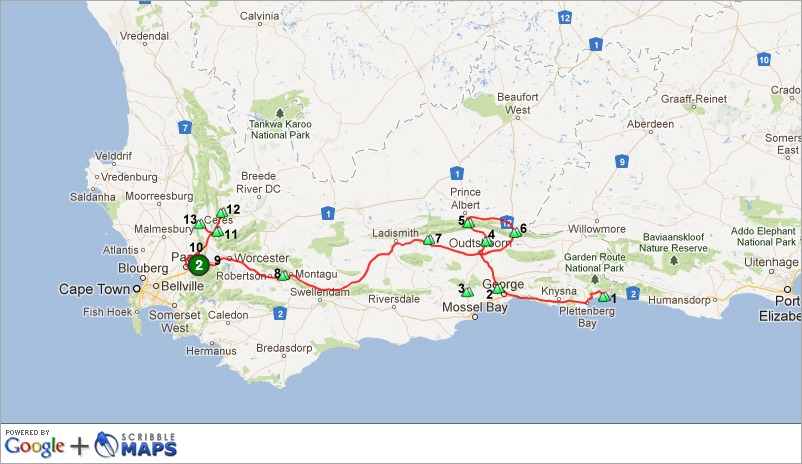
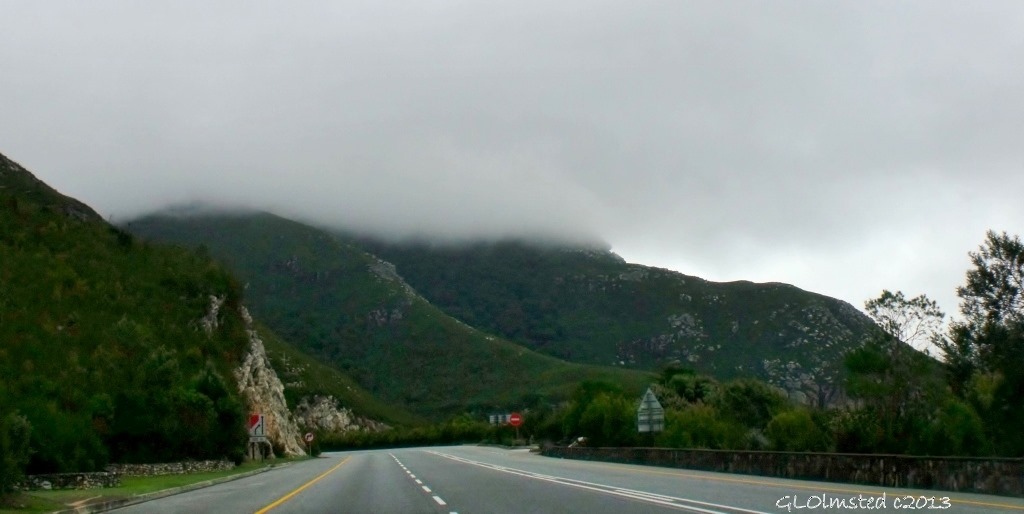
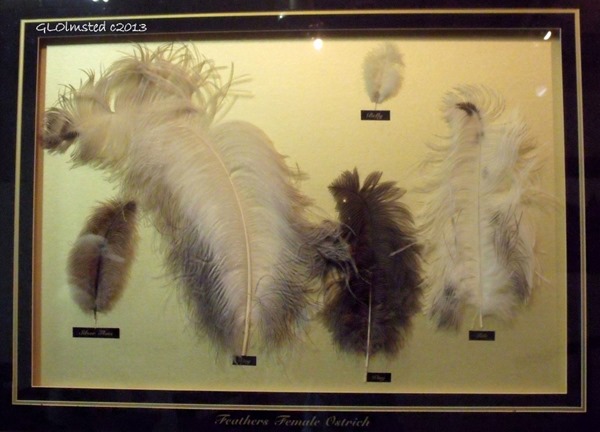
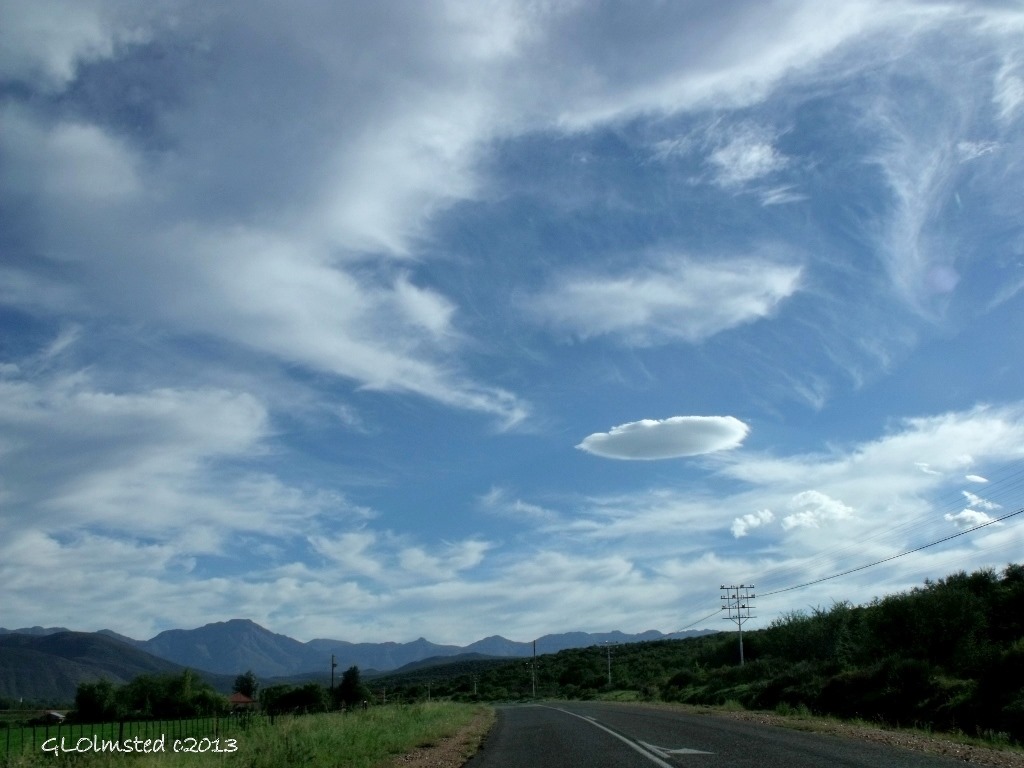
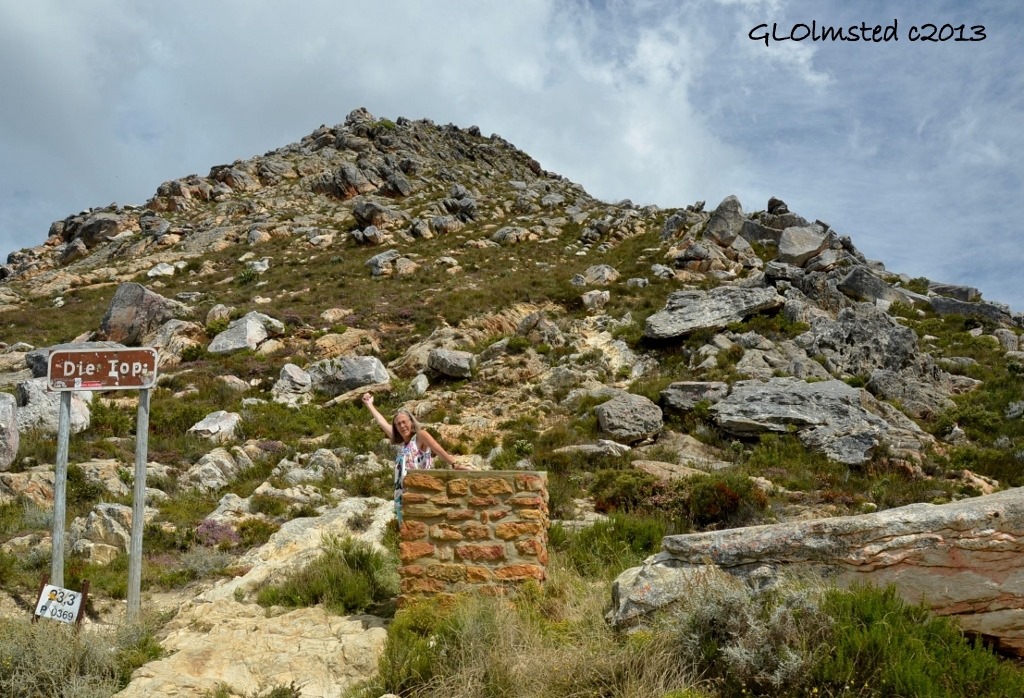
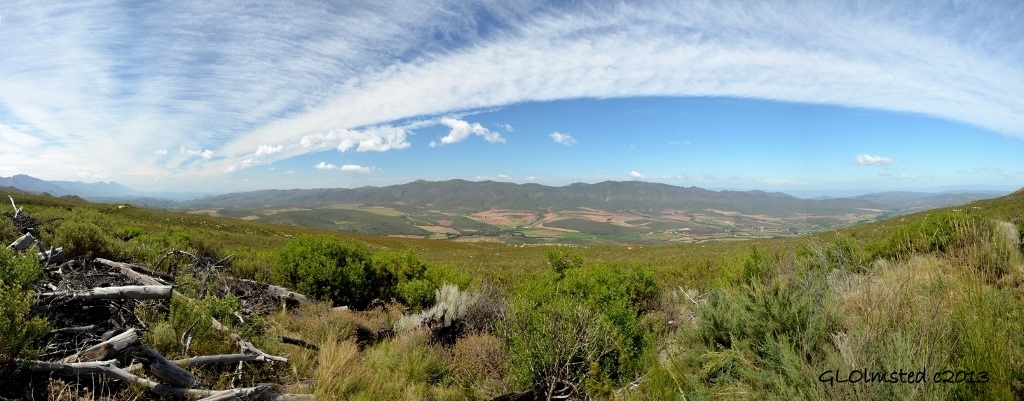

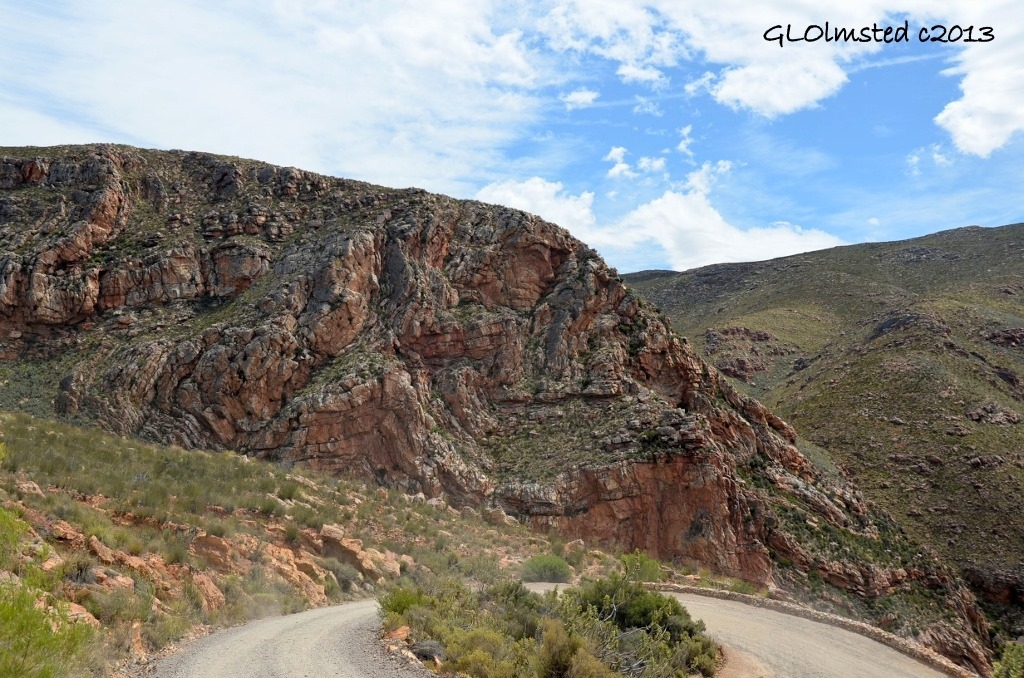
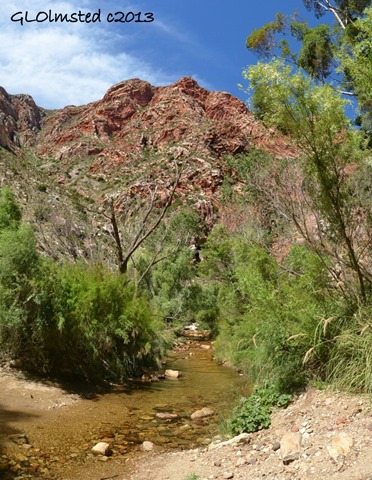
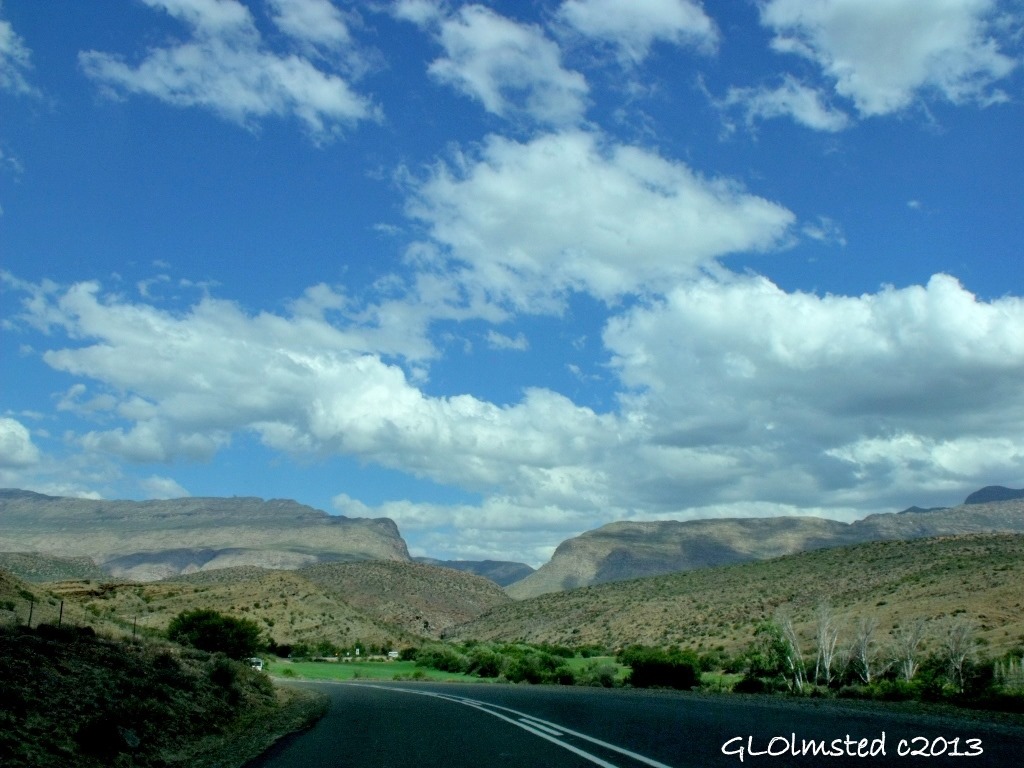
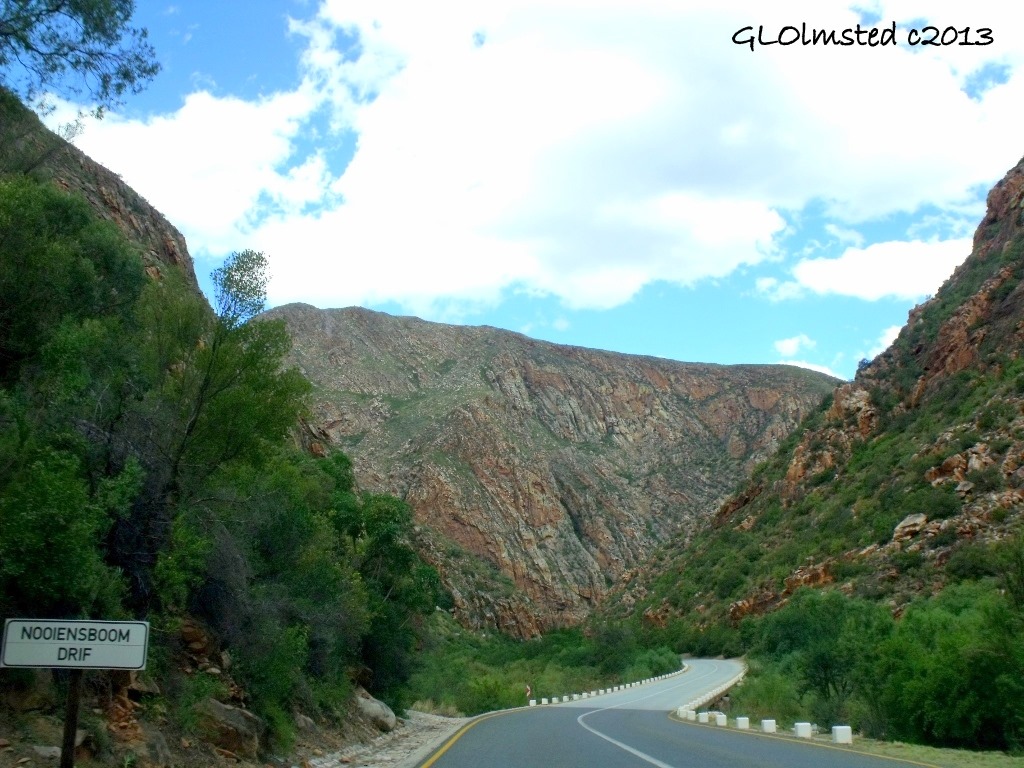
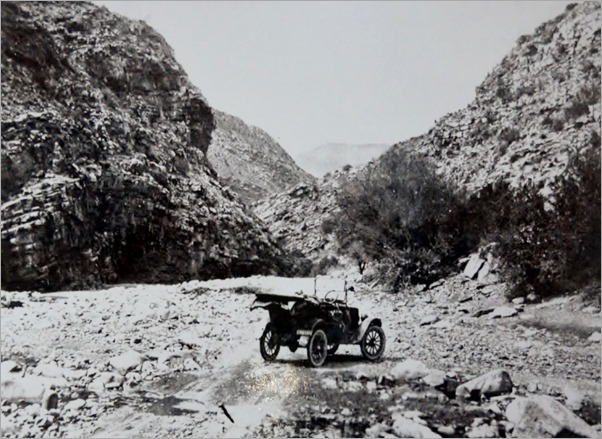
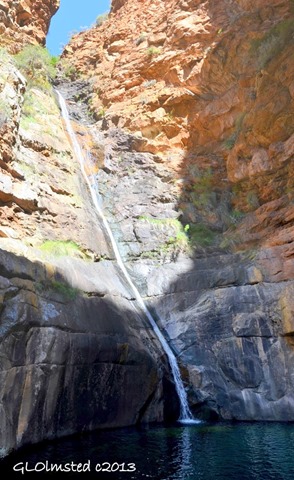
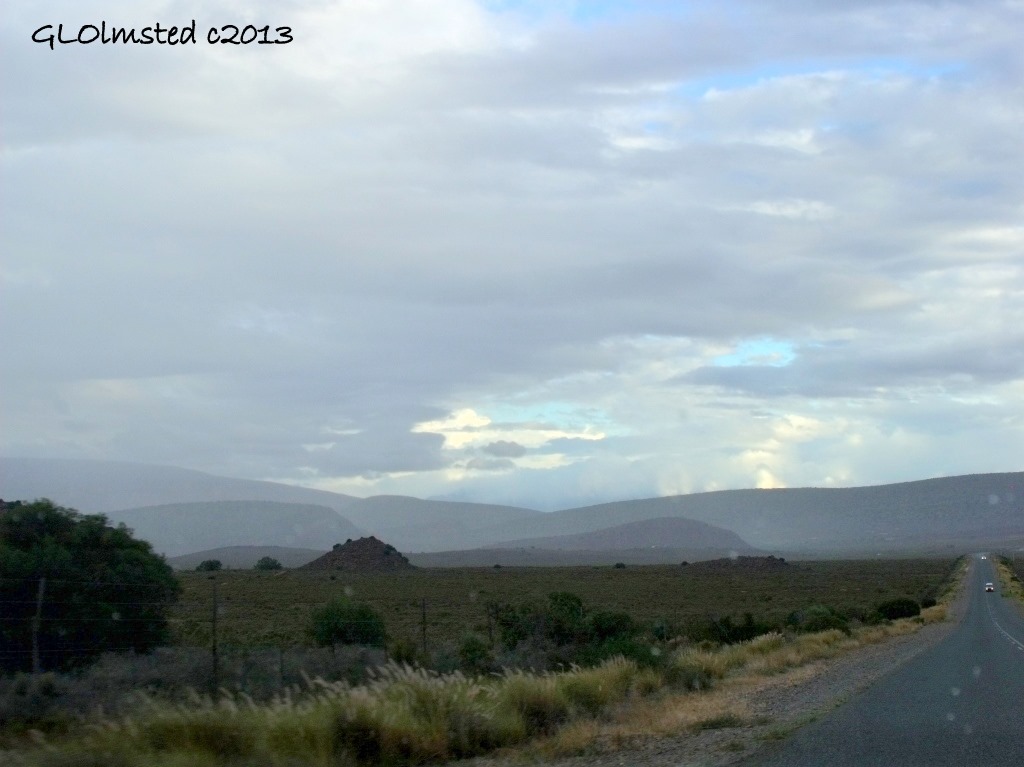
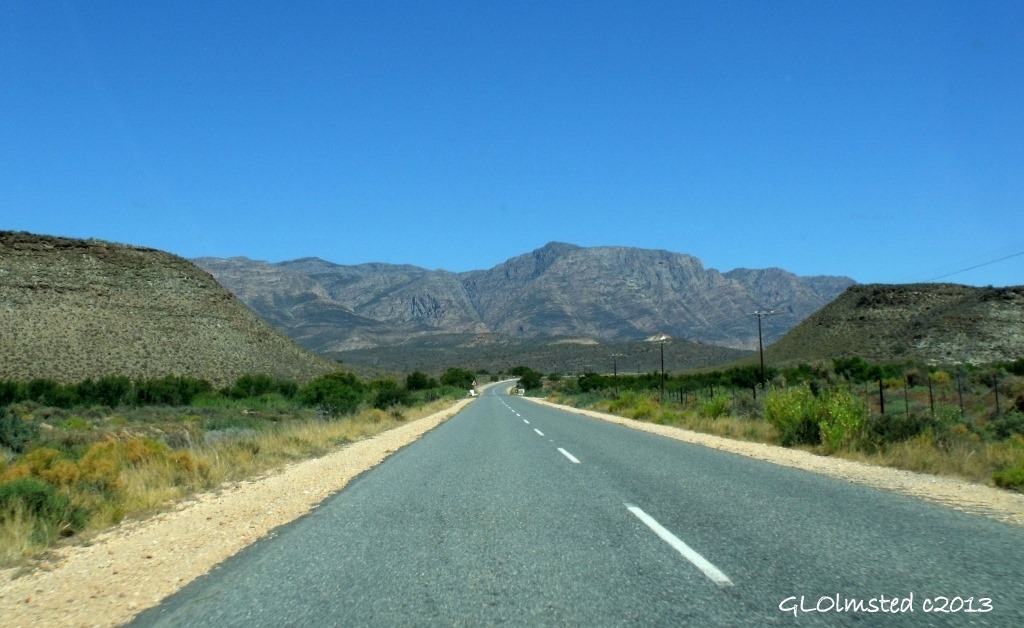
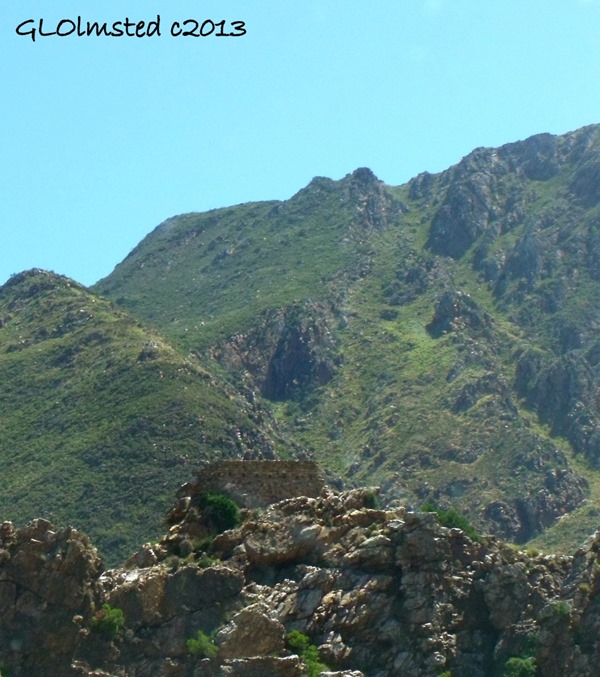
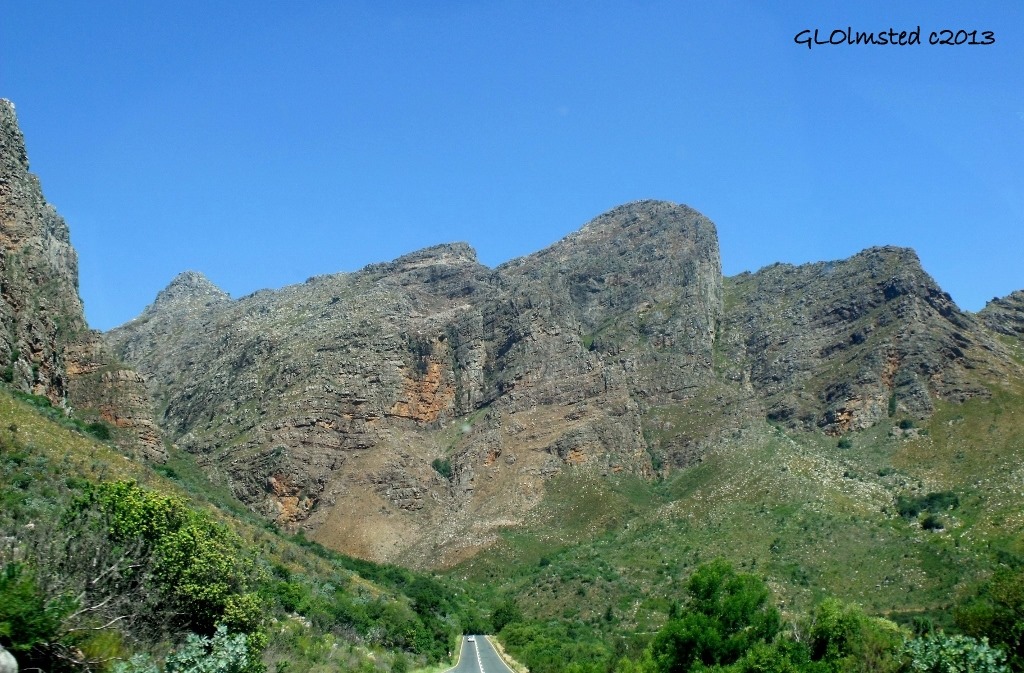

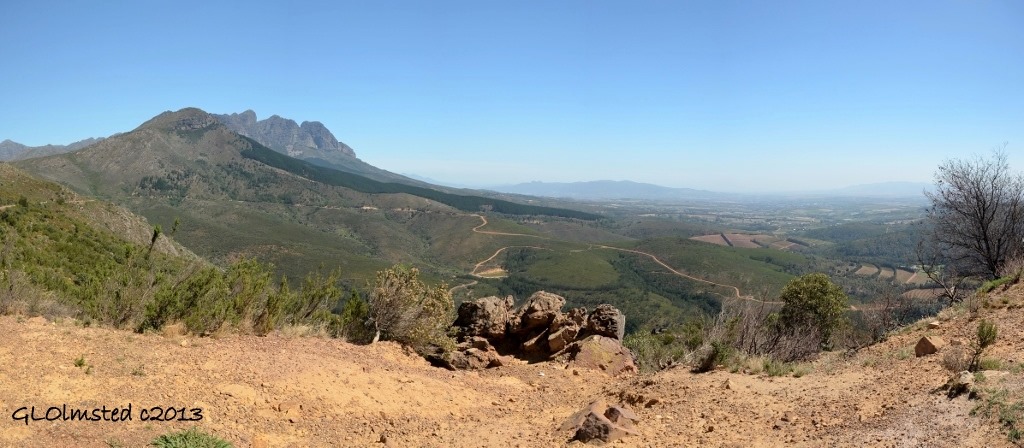
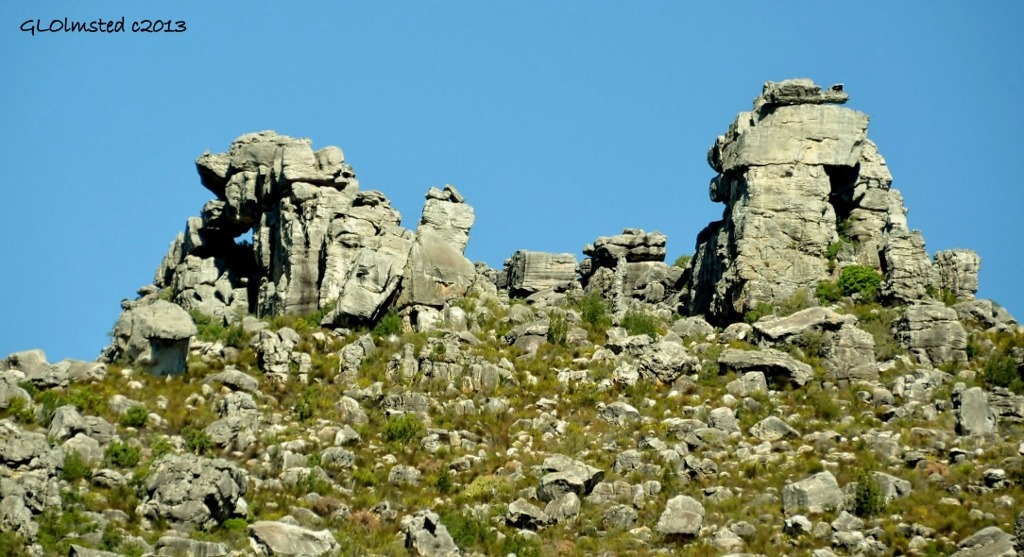
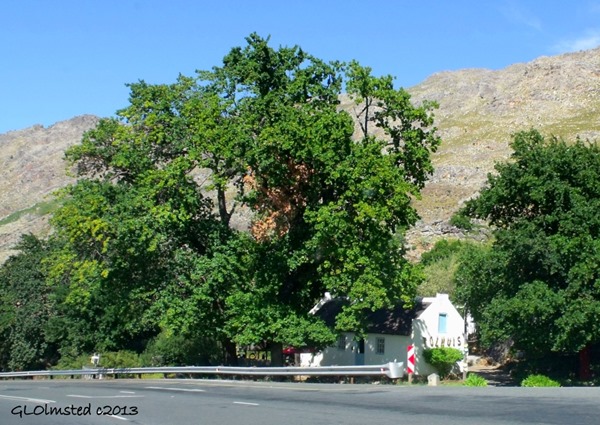
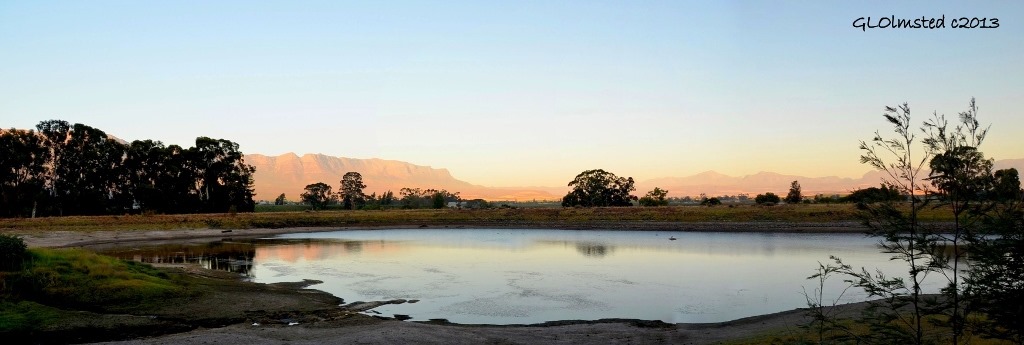
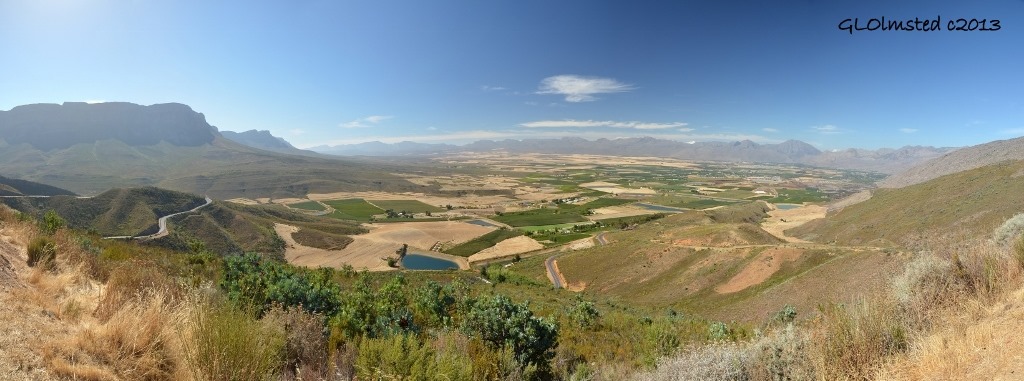
Beautiul! I am one of the folks that does not like traveling on high, curvy, scary roads! I prefer to visit them in beautiful photographs like yours! Wonderful blog, thank you for sharing with us.
Glad to have taken you along virtually.
Such an amazing adventure! I am enjoying all that you share with us. I love that you allowed yourself time to llolgag, and to ask around at each locale for the best routes and spots to encounter the “wilds.” Thank you for taking us along!
Susan (Mrs, Geotripper)
I find that the locals give great advice. And I love to lollygag.
Those are a lot of passes and those are also some amazing views! I cannot believe you drove all over that country by yourself in such remote areas AND on the LEFT side of the road! I would have been overwhelmed by it all! Just amazing!
I was overwhelmed by it all!
Like, like, like…a lot! Marvelous photos, that beautiful sky; great travelogue!
Thanks so much Lynda.
Oh my goodness Gaelyn. I had to read this twice so I could savor it. The mountain pass pictures and the waterfall just should should should be in a travel book or on travel posters. South Africa should sign you up. If you ever move on in your career to tour guide in South Africa please let me know in advance so I can start saving my money to afford the trip. In the meantime, reading your blog is just amazing. I can’t get over these pictures.
I’m blushing Sherry, but thank you. Start saving so you can go too, with me or without.
Very interesting post with scenic pictures. Enjoyed it; however, made me think that without all the names, I might have thought I was somewhere in the mountains in the US>
Many similarities to the geologic stories of our US mountains.
A very lovely post Gaelyn. There is so much beauty in this small country of mine and I am pleased you have enjoyed it so much. Really GREAT pics!!
How could I help but enjoy it. Thanks for opening my eyes to some of its beauty.
Love, love this post; the photos, the explanations, and the word origin part. I don’t like driving (when I drive) in the mountains because I can’t easily take a photo. Notice I said ‘easily’. I do drive and shoot….but as a passenger I roll down the window and go for it.
It’s a lot easier to take photos as a passenger but when I have no choice… Thanks.
Hi, Great post. My husband and I also love to drive the passes in SA. We recently drove the Molteno Pass between Loxton and Beaufort West – the oldest pass in SA – built by Thomas Bain. It was beautiful. We will definitely try a few of the passes in your post.
Thanks for the suggestion. I’m putting Molteno Pass on my list for next time.
Oh WOW, Gaelyn,passes are a biker’s favorite of all time and although we’ve done many of the passes you show here, the last four are still on our bucket list. Did you go right down into De Hell (The Hell) which is the most beautiful valley I have ever been into? Thanks for the wonderful travelogue: brilliant post altogether. (((Hugs))) Jo
I must have missed De Hell. Where is it?
What a super post. I had no idea that South Africa had such beautiful rugged terrain. Great photographs.
Thanks Yogi. The SA geology matches ours in the US in many areas.
Mountain passes make me nervous. One time in Veracruz I saw a driver get killed by a truck while on my bus. We were in clouds in a rain forest. I wasn’t a birder then, but I sure was traumatized. There’s a road in Bolivia that is supposed to be the worst road in the world. We shall see…….someday:)
I’d prefer not to drive the mountains in fowl weather.
I like mountain roads unless the traffic is bad. I don’t see another car in any of your photos. The clouds in the Prince Albert picture are beautiful!
There really wasn’t too much traffic and I try to take photos when there’s no cars. Besides, in traffic I usually keep my hands on the wheel.
Beautiful pictures and great travelog. I will read it over many times. Thanks. MB
Thanks MB.
Brilliant passes. I am one of those who love driving the long winding, curvy mountain roads. Giving way for other vehicles, and often waiting in the passing places, maneuvering the curves – that’s what I love the most. I loved each and every picture of yours, and the view of the mountains are gorgeous!
LOL. I often spend as much time on the side of those curvy roads admiring the views as I do driving. Thanks for coming by.
A lot of these images look a lot like Arizona. Perhaps that is why you like South Africa so much.
That could very well be.
South Africa truly has some beautiful passes. You really did a lot of stunning ones with the Swartberg Pass probably being the most iconic of this lot. The nice bit about passes are that no two are the same.
I loved the passes and will drive more of them next time.
Wow. There’s some stunning scenery on these routes. Makes me want to learn how to drive…again.
Thanks Arianwen. But please practice your driving skills on the straighter roads first. 🙂
Wonderful mountain passes. We like driving in the mountains…I am always surprised when we meet people who are afraid of them (and I’m just talking about the western US passes) Beautiful pictures…thank you for sharing the journey.
I don’t really understand what’s to be afraid of. The lanes are always the same width.
Some of those are incredible! I wikipediad the Swartberg Pass and some others after reading this, and this is an amazing picture of part of the North end!
Have you been to Mpumalanga yet? From research I believe the World’s oldest mountains are there, “The Barberton Greenstone Belt”. Searches also bring up The Abel Erasmus Pass, Long Tom Pass, the Blyde River Canyon, The Panorama Route and some AMAZING looking places in that ancient area. BOY I’m envious!
What a great journey you are on! Enjoy every second!